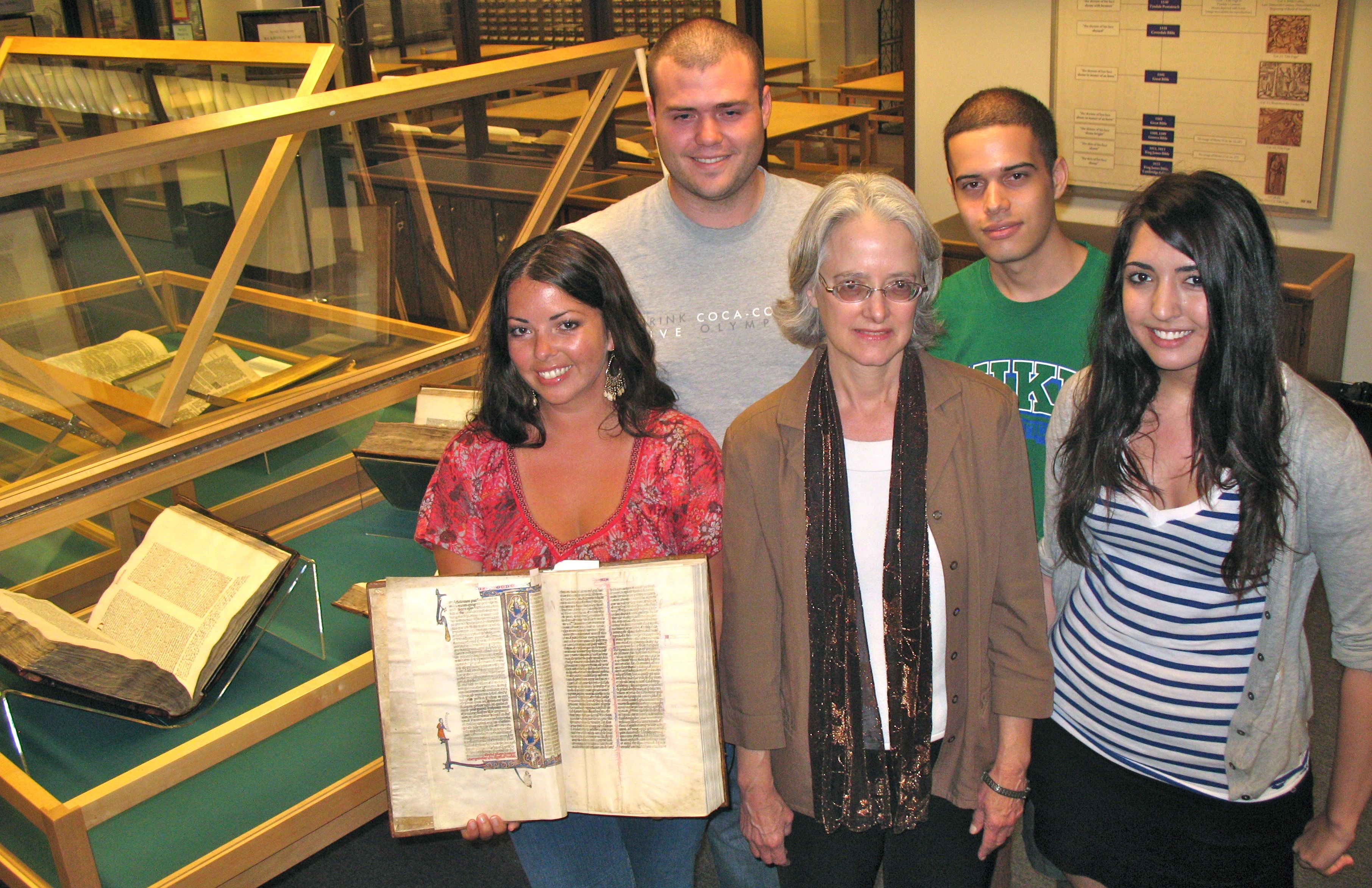
Twenty-seven rare books and manuscripts from the 13th through 17th centuries are on display in the special collections department of Davidson Library at UC Santa Barbara. Together they trace the history of the modern Bible, from its beginnings as a series of partial manuscripts to the single volume format that exists today.
The exhibit, titled "Framing the Word: The Making of the Modern Bible, c. 1250-1611," is curated by Sharon Farmer, professor of history at UCSB, and a group of six UCSB undergraduate students, all of whom are majoring in history. Despite their historical significance, the special collections exhibit marks the first time most of these books have been presented to the public.
A conference relating to the exhibit will take place at 1 p.m. on Friday, May 27, in the McCune Conference Room, 6020 Humanities and Social Sciences Building at UCSB. It is free and open to the public.
"Before the 13th century, the Bible was really an entire library," explained Farmer. "The individual books weren't bound as one single volume." A number of other production standards were adopted in 13th-century Paris, including the order of the books, the placement of running titles across the top of the page, and the use of numbered chapters. "In deciding the order of the books, the Old Testament was particularly an issue. Parisian scholars emphasized the need to know Biblical history before reading wisdom literature and prophets," Farmer continued. "So the way the Christian Old Testament is organized is different from Hebrew scripture."
The exhibit also explores the role language played in the history of the modern Bible. Originally written in Hebrew and Greek, the Bible was translated into Latin for the first time a few centuries later by a priest named Jerome. However, 16th-century scholars revisiting the original languages discovered errors and ambiguities in Jerome's Latin translation. This questioning of the veracity of that Latin translation was called the Philological Revolution. It was associated with a number of famous scholars, including the theologian Desiderius Erasmus. Erasmus published the first New Testament in Greek, which was accompanied by his own Latin translation. According to Farmer, his translation was intentionally provocative by differing from the version produced by Jerome centuries earlier.
"Another person associated with the Philological Revolution is Cardinal Cisneros of Spain," Farmer said. "He established an entire university for the study of biblical languages, and then published something called the Polyglot Bible. It had not only Hebrew and Greek, but also Chaldean." Certain parts of the apocryphal Jewish scriptures were originally written in Chaldea –– a language from an area bordering the Persian Gulf –– she noted.
Included in the exhibit are a polyglot, an Erasmus, and the first New Testament that was published all alone in Greek. "And it may be the one Martin Luther used when he translated the New Testament into German," Farmer said. "We also have a key Martin Luther German translation from 1540."
According to Farmer, every important English translation of the 16th century is represented in the exhibit, from a New Testament printed by William Tyndale –– who completed his work in exile and ultimately was executed for his efforts –– to the Geneva Bible, which was quoted by Shakespeare and brought to the New World by the Puritans. Also present is the Coverdale Bible, the first complete Modern English translation of the Bible ever printed; the first Bible ever printed in Switzerland, by a printer who apprenticed with Johannes Gutenberg; and a 1613 edition of the King James Bible.
"The Great Bible, the first official English Bible, which was sanctioned by Henry VIII, came out in 1539," Farmer said. "We don't have that one, but we have one from 1541."
The exhibit continues through July 15. Hours are 9 a.m. to 5 p.m. Monday through Friday; and 5 to 8 p.m. on Tuesdays and Wednesdays through June 8. More information about the exhibit and about the conference, including a complete schedule of speakers, is available at http://medievalstudies.ucsb.edu.
† Top photo: History professor Sharon Farmer (center) is joined by undergraduate history scholars (from left) Tony Nangle, Andrew Roller, Ryka Farotte, and Samantha Neuman. Their research is part of the exhibit "Framing the Word: The Making of the Modern Bible."
Credit: George Foulsham, Office of Public Affairs
Related Links



